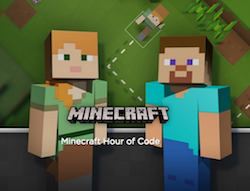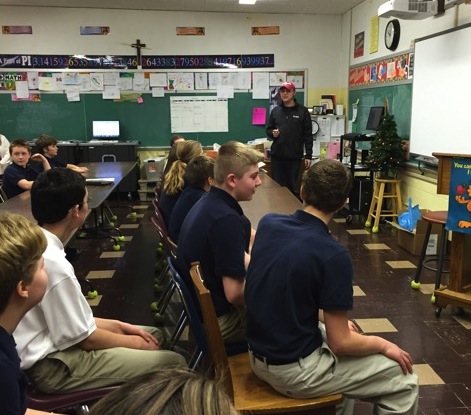 In December, the Linux Foundation joined many organizations in support of Hour of Code (HoC). This program, which is sponsored by Code.org, provides children with a one-hour introduction to computer science using tutorials designed to explain code in a simple way and show that anyone can be involved. The program offers tools that both teachers and volunteers can use to present basic coding ideas to children. This year’s tutorials aimed to engage young coders using examples from Minecraft and Star Wars, and also featured Anna and Elsa from Frozen.
In December, the Linux Foundation joined many organizations in support of Hour of Code (HoC). This program, which is sponsored by Code.org, provides children with a one-hour introduction to computer science using tutorials designed to explain code in a simple way and show that anyone can be involved. The program offers tools that both teachers and volunteers can use to present basic coding ideas to children. This year’s tutorials aimed to engage young coders using examples from Minecraft and Star Wars, and also featured Anna and Elsa from Frozen.
As part of this program, some Linux Foundation experts volunteered for HoC and visited schools in their communities to promote careers in technology and teach basic coding lessons. One of these volunteers, John Mertic, agreed to share his experiences with us.
John is a Senior Program Manager, who manages day-to-day operations for two collaborative projects on behalf of the Linux Foundation: ODPi and Open Mainframe Project. “In my role, I not only support the various technical and business groups within these projects but also ensure that the governance and principles of open source are upheld,” he said.
For HoC, John volunteered at Sts. Peter and Paul School in Doylestown, Ohio. He spoke to about 100 students, with grades K-4 in one setting and grades 5-8 in the other. “The students had already done the code examples in their computer lab earlier in the week, so I started by using a video on code.org to introduce the Hour of Code to them. I talked about my experiences in computer science, focusing on my work in open source specifically. I then let the students ask questions about my career and experiences,” John said.
John has been involved in open source for his entire professional career — contributing to projects such as PHP, as an open source community manager with SugarCRM, and in leadership roles with consortiums such as OW2 and OpenSocial. He said, “I enjoy using the skills and experience I’ve developed to help others.”

Although he was asked a few silly questions during his presentation — such as “Have you ever met Bill Gates or Mark Zuckerberg?” — John noted that other children wanted to know whether he had written any code that was a part of a particular app, game, or website that they were familiar with. Additionally, they wanted to know how hard it was to get into coding and computer science. John said, “One thing I stressed is that computer science and coding is unique in that there are no real barriers to entry. Thanks to open source, anyone can get online, grab the toolsets needing to get started, and start building. This really lit up the students, as the older ones asked about ways to get started.”
John said, “What resonated most with the students is how coding, and in particular open source, can help make a positive impact on others and the world as a whole.”
Overall, John was impressed by the thoughtful questions coming from the students, but he said the best questions related to how to get started in computer science and coding in general. He said, “It’s very empowering telling them that coding is something that there are no true barriers to entering… all you need is your own creativity!”
Some of the best reactions came from John’s own children. He said, “Both of my boys were really excited about the coding examples. They’re big Minecraft fans.” He said the boys (Carter, age 5 and Yin Bai, age 6) took instantly to the Minecraft examples and found them both engaging and easy to do.
John’s daughter (Mallory, age 9) and niece (Angelina, age 10) also expressed interest in coding after the presentation. He said the girls started looking at the other examples on the website — Star Wars was a big hit — and trying them out. They also both asked John several questions about coding in the days afterward.
“I also had several students and teachers come up to me a few days later when I was at the school, both thanking me for coming, as well as asking more questions about coding. The children’s technology teacher was really excited at how engaged the students were,” John said.
Working with the students and volunteering in the classroom was a rewarding experience for John, who said, “I am grateful that the Linux Foundation helps sponsor this effort, along with all the work the team at code.org put into making it easy for any classroom to engage with. I also want to thank the teachers and staff at Sts. Peter and Paul School for letting me talk to the students, especially Mrs. Diane Richmond for helping coordinate the Hour of Code at the school.”
The best part, John said, was having students come up to him a few days later, thanking him and asking questions about computer science. “I could tell the bug truly hit them!”


